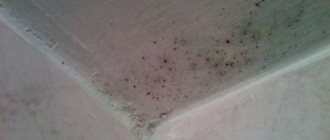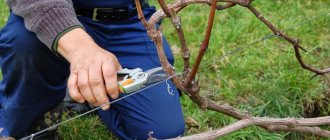The last harvest has been harvested, but the dacha work is not finished yet. The question arises of how to disinfect a greenhouse in the fall and tidy up the soil in order to destroy pests that are preparing for winter and pathogenic microflora.
It seems obvious that treating a greenhouse in the fall against diseases and pests is a vital procedure. But some summer residents put it off until spring, limiting themselves only to removing plant debris and digging up the soil. Meanwhile, prevention is very important. And often such negligence leads to the fact that seedlings from the first days of planting in the ground suffer from pests and diseases. That's why we've put together simple and valuable tips on how to treat your greenhouse in the fall after harvest, so you can get the job done.
Caring for a greenhouse in the fall includes cleaning, washing the structure, and cultivating the soil. Also, after harvesting, it is worth preparing the soil for planting seedlings and applying fertilizer. Let's take a step-by-step look at the work in the greenhouse in the fall, paying special attention to disinfection procedures.
All types of greenhouses and greenhouses are subjected to treatment.
Preparing a greenhouse for tomatoes in the fall
youtube.com
In order for tomatoes to grow healthy and strong, it is important to tidy up the greenhouse soil. This is especially true if you grew tomatoes in a greenhouse this year and they were affected by late blight or other diseases. You can replace the top layer of soil, but this, alas, does not eliminate the possibility of infection in the future. Therefore, for the best effect, plant green manure in the greenhouse: rye or alfalfa. They will disinfect the soil, saturate it with nutrients and make it looser and more fertile. Seedlings planted on such soil will begin to grow faster!
- Which green manure crops are best sown in a greenhouse in the fall?
Green fertilizers will help the soil recover after the summer season. But how to determine the best green manure for sowing in the fall? Let's find out!
What else needs to be done in the greenhouse in the fall so that the tomatoes enjoy it there in the spring? Since plants have a fairly branched root system, they need the most loose and permeable soil possible. Sifting the soil, as well as adding humus, compost and vermicompost will help improve these indicators. Tomatoes do not like acidic soils, so if there is such a problem, be sure to deacidify, for example, add 300-500 g of lime per 1 sq.m.
- What to add to the soil in the fall to increase its fertility
Caring for the garden plot continues with the onset of autumn. We'll tell you what will be beneficial for the soil this season.
Soil treatment methods
Greenhouse treatment should begin immediately after harvest. First, you should clear the area of tops and other plant debris. Processing must be comprehensive. First of all, it is worth paying attention to the disinfection of the soil in the greenhouse, which can be done in various ways:
- Replacement of soil.
- Fumigation.
- Sprinkling with bleach.
- Spraying with pesticides.
First things first.
Soil replacement
This is a rather labor-intensive process, but after it the number of pests decreases significantly. Soil preparation in a greenhouse with a complete replacement of the soil should be done every 3 years.
The soil must be removed to a depth of 8-10 cm. Then manure, humus, peat, ash and sand are added in its place. The proportions depend on the ingredient, but they do not exceed 1 bucket per 1 square meter. m. of land. Soil cultivation, especially for oily and heavy soils, may include fluffing with sawdust. You need to be careful with this method; if possible, you should not use sawdust from coniferous trees, as well as from those species that have a large amount of tannins (walnut, oak).
As a result, the resulting mixture needs to be dug up, evenly distributed over the planting areas and covered on top with a thick layer of mulch - fallen leaves or straw.
After the first snow falls, you need to throw it into the greenhouse (layer 15-20 cm). This will protect the soil from deep freezing and also provide it with the necessary moisture in the spring. Some gardeners advise watering the enriched soil with a weak solution of potassium permanganate, as it disinfects well. This is best done before adding fertilizer.
You may be interested in: How to feed honeysuckle in the fall, basic crop care
At this point, soil preparation for winter and the next planting can be considered successfully completed.
Contaminated soil should be thrown away. You can, of course, “treat” it, but this will take at least 2 years and a lot of labor.
Fumigation
A polycarbonate greenhouse can be disinfected by fumigating the room. For this you can use special sulfur bombs. You can make them yourself: you need to mix feed sulfur with kerosene to the consistency of thick sour cream. Dosage: 50 g of mixture per 1 cubic meter of greenhouse.
Step-by-step fumigation process:
- Place the fumigators evenly throughout the greenhouse. See the packaging for how many checkers you will need for your greenhouse.
- Spray all surfaces (walls, shelves, ceiling) with water.
- Light the mixture.
- When the smoke begins to actively emit, try to actively seal the greenhouse - all the cracks where the smoke is coming from should be sealed with tape.
The time for tilling the soil in a greenhouse for checkers will be 4-5 hours, for home-made mixtures it will take 2-3 days. Please note that if the greenhouse was infected with spider mites, then the dose for disinfection should be increased 3 times, that is, up to 150 g.
Sprinkling
The next method of controlling pests and plant diseases is sprinkling with bleach. This is the simplest and cheapest method, but no less effective. Using sprinkling you can get rid of fusarium, late blight and other fungal diseases.
Produced on undug soil. Consumption per 1 sq. m. is 50 g of substance. After sprinkling, the beds need to be dug up.
Spraying with pesticides
In order for the greenhouse structure to remain not only clean, but also disinfected, it must be sprayed. For this you can use:
- solution of copper sulfate (1 tablespoon of substance per 10 liters of water);
- bleach (400 g per 10 liters of water);
- potassium permanganate (1 tsp per 10 liters of water);
- formalin (1 tbsp per 10 liters of water).
You may be interested in: Fertilizing apple trees in the fall: doing everything right
After preparing the solution, the top third of the bucket can be used to disinfect the soil, and the bottom third, the most concentrated one, can be used to disinfect all parts of the greenhouse.
The soil just needs to be watered generously with the solution and then dug up. And the greenhouse structure can be sprayed or wiped well with a rag soaked in the prepared solution.
In addition to these substances, the following chemicals can be used:
- Carbation 40% (500 g per 10 l of water);
- Karbofos (90 g per 10 liters of water);
- biological preparations based on Bacillus subtilis (Alirin, Baksis, Gamair, Fitosporion-M, Fitophtorin).
All actions to treat the soil against pests and diseases should be carried out at a temperature of 10-15 degrees. Otherwise, the effectiveness of disinfection is reduced.
Also, do not forget about personal protective equipment. During disinfection, rubber gloves, thick clothing (preferably overalls), a respirator and sealed goggles are required. Otherwise, you can get severe poisoning.
Processing auxiliary elements
Everything that is in the greenhouse during the season (containers, dishes, equipment, nets, trellises and others) is contaminated with pathogenic microflora no less than the soil or walls of the greenhouse. Therefore, after completing all work in the greenhouse, these auxiliary elements must be put in order, washed and sanitized.
Plastic containers and nets must be cleaned, washed, disinfected with a solution of any fungicide (for example, copper sulfate) and dried. All the ropes that were stretched in the greenhouse, as well as the wooden pegs to which the plants were tied, must be burned. This is, in fact, a consumable material and there is no point in disinfecting it. But there is no need to reuse them, since there are no less harmful bacteria on them than on soil.
How does a polycarbonate greenhouse differ from a glass greenhouse?
Polycarbonate is a special type of plastic. It is extremely durable and shatter-resistant—about 250 times stronger than glass.
Due to its cellular structure, cellular polycarbonate retains heat better than glass and retains heat in the greenhouse longer. And although cellular polycarbonate is produced up to 40 mm thick, the standard sheet thickness for a seasonal greenhouse is 4 mm.
High-quality polycarbonate with a concentrated UV protective layer lasts at least 10 years; in addition, due to its high strength, polycarbonate does not break (like glass), it is not easy to damage, and if damage occurs, polycarbonate does not shatter into fragments.
Besides all the benefits of ease of operation, polycarbonate sheets also provide better light diffusion than glass. This is a huge benefit as the plants inside will receive an equal amount of sunlight and maximize their growth potential.
Quality polycarbonate sheets also have a UV-resistant coating on one side, which protects both the plants and the longevity of the structure.
But polycarbonate can be scratched. Therefore, never wipe polycarbonate with a dry, hard cloth or the abrasive side of a sponge, as dust and dirt particles act like knives, damaging the surface over time.
If the greenhouse is very dirty, first rinse it under running water. Do not smear the dirt, it will scratch the surface
Planting material
It is very important to plant healthy seedlings in the greenhouse or sow seeds that are not infected with diseases. Even the best soil, capable of resisting pathogens, can suddenly contain so many pathogens that it cannot cope. Therefore, you should not test the disinfecting properties of soil.
To treat the seeds, it is enough to soak them in a weak solution of potassium permanganate or a soap suspension (the soap should be laundry soap). Then the seed should be rinsed and dried. It is recommended to sow seeds for seedlings in a high-quality mixture.
Important! Contrary to popular belief, most soil mixtures offered by specialty stores are safe from the point of view of contamination by harmful microbes and eggs of pests.
You can make planting mixtures yourself by preparing leaf, turf, coniferous soil and sand in advance. All ingredients of the future substrate are well frozen in winter. If you have doubts about the quality, you can heat small amounts of soil in the oven.
Thus, creating a healthy microclimate in a greenhouse and growing strong and healthy plants is quite possible.
The conditions necessary for this will be created by:
- annual final work in the fall;
- pre-tillage in spring;
- alternate or combined use of various methods of land disinfection;
- creating your own compost;
- proper preparation of planting material.
How to treat a greenhouse against spider mites in the fall
Spider mites are a very dangerous, voracious pest that can easily destroy all your plants and ruin your harvest, as it spreads very quickly throughout the greenhouse. Read more about how to deal with it here.
Healthy soil and the same plants on it successfully resist the moderate onslaught of pathogens that are constantly present in the atmosphere and earth. Therefore, there is no need to worry about the harvest.
Video - Disinfection of soil in a greenhouse with Fitosporin
Growing plants in winter
You can grow plants in a greenhouse all year round if it is heated. This is important for plant growth not only in winter. Heating in the spring allows you to enjoy the harvest faster, in the fall it extends the growing season, and heating a polycarbonate greenhouse ensures the safety of winter perennials.
Insulating a greenhouse saves energy; you can lay out transparent film on the walls. In case of very low temperatures, you can additionally cover the walls with straw mats.
In an unheated greenhouse, the temperature reaches below 0 ° C, but we can freely control the moisture in the soil. This approach is good because the structure ultimately has to be cleaned less intensively and less often.
Accordingly, you don’t have to rush to decide how to wash the inside of a polycarbonate greenhouse in the fall in order to quickly put it in order before frost.
A polycarbonate-based greenhouse turns into an optimal place for wintering plants that need to stay dry during the hibernation period, and excess moisture can cause them to rot.
Soil for a greenhouse - when to change it, how to prepare it correctly
Experienced experts recommend changing the soil in the greenhouse at least once every 5 years. If the greenhouse was heavily infected, which led to the loss of the harvest, in the fall of the same year, a 300 mm layer of soil must be taken out to a fenced area, laid 200 mm thick, spilled with manganese, sprinkled with lime, disinfected with a solution of copper sulfate, dug up and left to freeze. After a year or two, you can scatter it in a thin layer over the area; it is not recommended to reuse it.
The best recipe for preparing a new nutritious soil mixture for a greenhouse:
- turf, garden or forest soil – 1 hour;
- river sand – 1 hour;
- humus – 2-3;
- peat – 5;
- 4 kg of lime per cubic meter of finished composition.
Mix the mixture thoroughly, fill the beds, fertilize with compost, ash, and manure. Next, you should sprinkle with biological preparations, copper sulfate, dig up, dismantle and sow with green manure, which will improve the soil structure in the greenhouse.
Different agricultural crops require their own soil composition
Repair and processing of the greenhouse frame
During operation, the frame suffers almost more than the covering material. The metal profile collapses and rusts, the wood rots and turns into dust under the influence of high temperature and humidity. In autumn it is worth paying special attention to this. The metal profile needs to be cleaned of rust and painted. Wooden elements that have become unusable must be replaced.
The places of contact between frame elements and polycarbonate sheets are the most contaminated, since many different harmful microflora are packed into such cracks. Therefore, such places need to be treated especially carefully, sparing no disinfectant solution.











